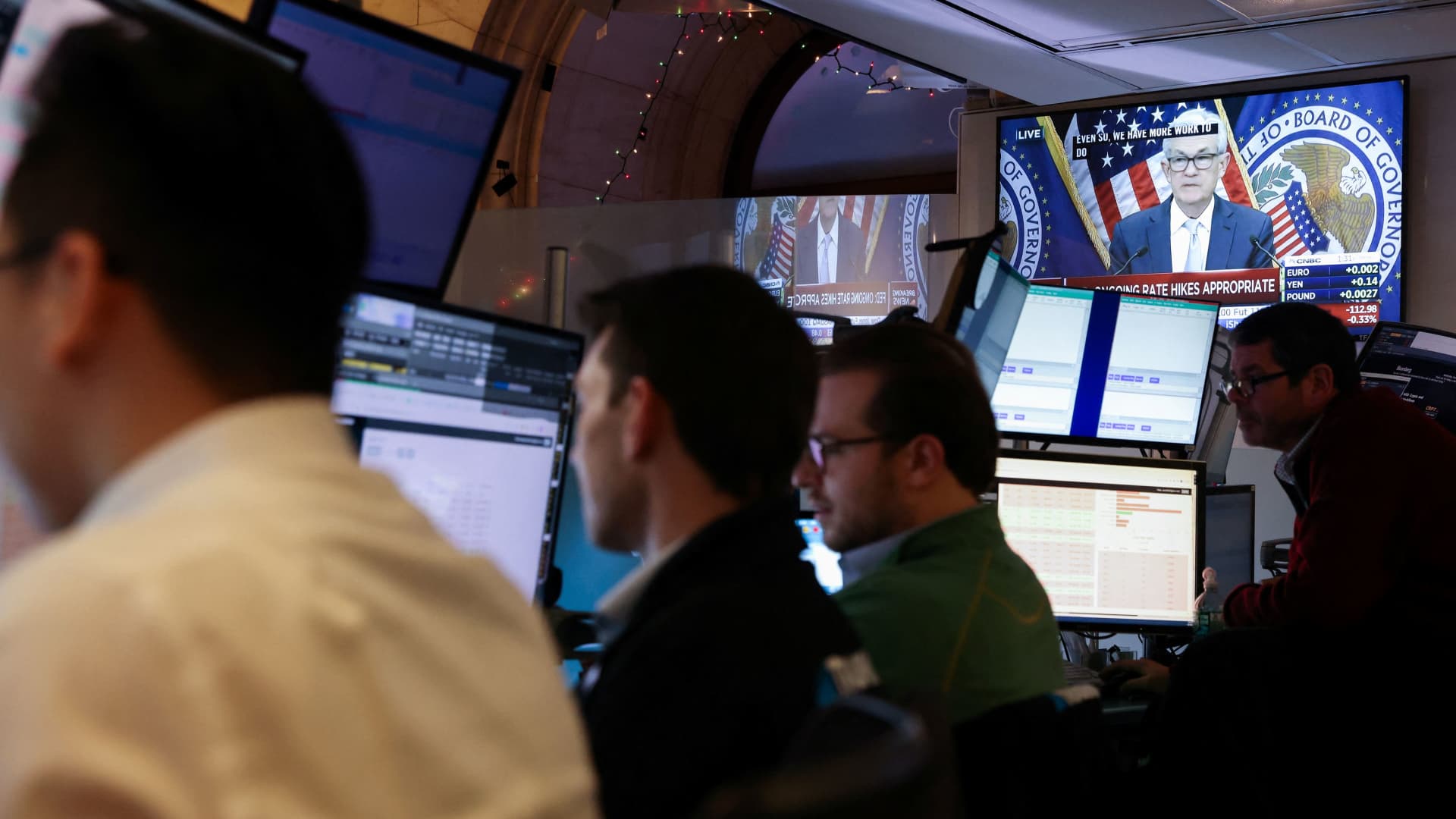

The Federal Reserve played a major role in moving markets in 2022, driving a campaign of monetary tightening as it tried to combat inflation that hit multi-decade highs.
Many who had money in stocks and even bonds suffered, as liquidity was sucked out of the market with every rate hike employed by the Fed — seven of them in the past year alone. In mid-December, the central bank rose its benchmark interest rate to the highest level in 15 years, taking it to a targeted range between 4.25% and 4.5%.
Prior to that, the U.S. saw a four consecutive three-quarter point hikes — the most aggressive policy decisions since the early 1980s.
Fed officials and economists expect rates to stay high next year, with reductions unlikely until 2024. But that doesn’t mean the Fed will remain the primary driver of the markets. Patrick Armstrong, chief investment officer at Plurimi Wealth LLP, sees different financial drivers retaking the reins.
“Next year I think it’s not going to be the Fed determining the market. I think it’s going to be companies, fundamentals, companies that can grow earnings, defend their margins, probably move higher,” Armstrong told CNBC’s “Squawk Box Europe” on Friday.
“Bond yields are giving you a real return now, above inflation. So it’s a reasonable place to put capital now, whereas at the start of this year it didn’t make much sense. It was hard to expect a return above inflation where yields were.”
The yield on the U.S. 10-year Treasury was at 3.856% on Friday, a rapid climb from 1.628% at the start of 2022. The yield on the benchmark note hit an all-time low of 0.55% in July 2020. Bond yields move inversely to prices.
Screens on the trading floor at New York Stock Exchange (NYSE) display the Federal Reserve Chair Jerome Powell during a news conference after the Federal Reserve announced interest rates will raise half a percentage point, in New York City, December 14, 2022.
Andrew Kelly | Reuters
“What happened this year was driven by the Fed,” Armstrong said. “Quantitative tightening, higher interest rates, they were pushed by inflation, and anything that was liquidity driven sold off. If you were equities and bond investors, came into the year getting less than a percent on a 10-year Treasury which makes no sense. Liquidity was the driver of the market, [and] the liquidity, the carpet’s been pulled from underneath investors.”
Armstrong did suggest that the U.S. may be “flirting with recession probably by the end of the first half of next year,” but noted that “it’s a very strong job market there, wage growth and consumption is 70% of the U.S. economy, so it’s not even sure that the U.S. does fall into recession.”
Key for 2023, the CIO said, will be “to find companies that can defend their margins. Because that is the real risk for equities.”
He noted that analysts have a 13% profit margin expectation for the S&P 500 in 2023, which is a record high.
But inflation and Fed tightening can still present a challenge to that, Armstrong maintained.
“I don’t think you can achieve that with a consumer that’s having their purses pulled in so many directions, from energy costs, mortgage costs, food prices, and probably dealing with a little bit of unemployment starting to creep up as the Fed continues to hike, and it’s designed to destroy demand,” Armstrong said. “So I think that is going to be the key in equities.”
— CNBC’s Jeff Cox contributed to this report.


